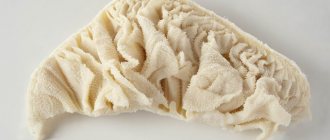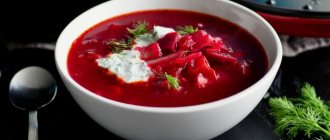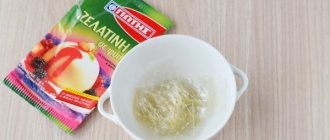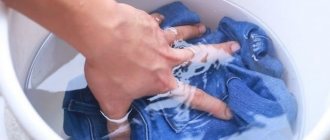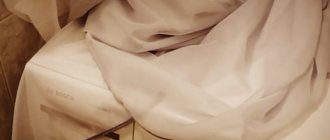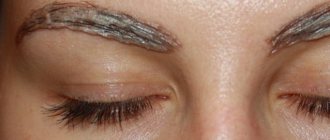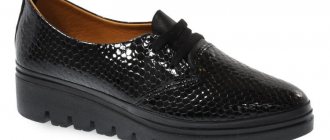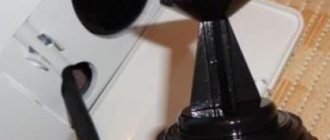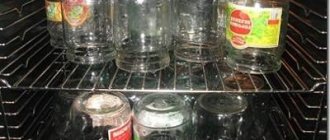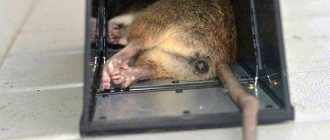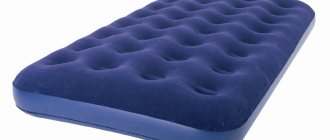With the arrival of a newborn in the house, the hassle associated with his care only increases. Mothers try to completely protect the baby from the influence of pathogenic microflora that can harm his fragile body. It is important to monitor the baby’s hygiene and the necessary feeding supplies. To avoid the negative impact of intestinal infections on the child’s body, it is necessary to properly sterilize bottles for newborns. The article will discuss the correct organization of the process, its stages, proven methods and methods.
Do bottles need to be sterilized?
Pediatricians insist that this process be carried out correctly. After all, milk formulas provide a breeding ground for the development and reproduction of microbes and E. coli. They contain large amounts of sugars, lactose, yeast and lactobacilli. If you leave the milk mixture on the table, it will become moldy faster than other products and begin to emit an unpleasant odor.
In the last century, there was virtually no need to sterilize baby bottles, due to the fact that almost every woman breastfed her child until 1 year and older. Modern life, accompanied by stress and negative environmental influences, leads to the fact that many babies need artificial feeding. A woman does not have enough breast milk or it is completely absent. This negatively affects the newborn's body.
But with mother's milk he receives a lot of vitamins and necessary enzymes that strengthen the baby's immune system. At the same time, the child’s body can fight a certain amount of bacteria.
E. coli can cause disruption of the gastrointestinal tract and its effects manifest itself in the form of diarrhea, vomiting, weight loss and dehydration.
To avoid this, mothers should sterilize baby bottles, pacifiers, and teething rings.
Among foreign pediatricians there are many opponents of disinfection of children's dishes and supporters of the theory of the development of the body's protective functions through its interaction with pathogenic microflora. Among them is the famous pediatrician Komarovsky. He believes that it is enough to wash the children's dishes with detergent and then rinse them with water. Sterilization, boiling and other methods lead to the development of allergic reactions in children who grew up in a germ-free environment.
On the other hand, a baby who begins to crawl pulls into his mouth all the objects that he comes across on the floor. Therefore, he has plenty of microbes to develop his immune system.
Sterilized bottles, nipples and other utensils protect the baby’s weak body from the influence of E. coli and other microbes.
Dilution of formula for newborns
Bottles - which ones are best for newborns
Preparing food for a baby is an important process. You need to know how to prepare formula for a newborn so that your baby receives healthy and tasty food every day that will help him grow and develop.
Proper dilution of formula
To feed your baby high-quality nutrition, you need to buy a good formula that is suitable for his age and other indications. For example, for the little ones, Similak Premium, Nan, Nestozhen and other brands received good ratings from doctors and parents.
Before diluting formula for newborns, you need to purchase bottled water intended for children. It contains a minimal amount of microelements that can overload the child’s kidneys; such water does not need to be boiled. If bottled water is not available, you can use filtered tap water, but be sure to boil it first.
Breeding formula
Infant formula is valuable and healthy for the baby if it is prepared exactly according to the included instructions. They indicate how to properly dilute infant formula and also contain other necessary information.
What to pay attention to:
- The proportions of powder and water are most important for a child. The box with the product always indicates how many scoops of powder need to be diluted in a certain amount of water, the age of the baby, as well as the number of servings per day;
Important! Preparing a mixture that is too thick or too watery can harm your baby. The baby’s digestive system may not be able to cope with the increased amount of microelements and protein in one serving. If you dilute the powder with too much water, the child will not get enough food.
- If the manufacturer indicates that the mixture is suitable for consumption within 4 weeks after opening the package, then after this period it must be thrown away;
- The child grows, so the amount of food gradually increases. If at 6 months of age he needs to drink 180 ml of the mixture, then after 2 months he will drink 210 ml. When diluting more food, the proportions of water and mixture are maintained;
- Breeding technique. You need to dilute the powder by adding it to a bottle filled with water, and not vice versa, adding liquid to the powder. Then gently rock the bottle until the mixture is completely dissolved. Vigorous shaking will cause the milk to froth;
- It is important to familiarize yourself with information about the temperature of the water used. If it is too cold, the powder will not dissolve and forms lumps.
Mixture temperature
To make eating effective and comfortable, you need to know what temperature the formula should be for feeding a newborn.
Important! Mixing the powder with boiling water destroys the valuable vitamins and nutrients contained in the mixture. To ensure that the product formula retains its properties, it should not be prepared at high temperatures.
The best formula temperature for feeding a newborn is 36-38°C. The product is usually prepared at a temperature of about 40°C. It is preferable not to provide food for a newborn in advance, but to prepare it right before use. It is also forbidden to leave uneaten milk for a later date - dangerous pathogenic microorganisms can form in food that has come into contact with the baby’s saliva.
Algorithm for bottle feeding a baby:
- Dilute the required amount of mixture in a clean bottle. Sometimes it is necessary to pour in breast milk, which must first be expressed;
- Install the nipple and make sure that the milk does not flow out in too frequent drops;
- Measure the temperature of the milk by applying a couple of drops to the skin of your wrist;
- Give the bottle to the child in your arms. In this case, it should be held at approximately an angle of 45°;
Feeding a baby from a bottle
- When the baby has finished eating, lift him upright and maintain in this position for about 5 minutes. This will allow air to escape if the baby burps, and food will not enter the respiratory system.
It is beneficial for the child to come into contact with the outside world and bacteria. This way his body will learn to produce antibodies. Sterile bottles and pacifiers do not weaken the newborn’s immunity, but only protect his digestive system from E. coli and other microbes. While the child is small and weak, it is better not to take risks and regularly sterilize baby feeding equipment and pacifiers.
Parents' advice
Until when should bottles be sterilized? As the baby grows, this question disappears on its own. After 5-6 months, they begin to feed him, and baby dishes are not sterilized. Just wash thoroughly.
By about a year, there will be no need for formula milk, so there is no need to sterilize bottles for newborns. By this time, the child’s body will be stronger and will be able to resist microbes from the immediate environment.
The baby's dishes must be washed with special detergents and rinsed thoroughly.
Until what age is sterilization required?
A breastfed baby who is getting enough milk may only need a water bottle for up to 6 months. It is enough to wash it with hot water and sterilize it 3-4 times a month.
For a child who is fed formula milk, sterilization in the first month of life is carried out at the choice of the parents, daily or once every few days. As they get older, sterilization can be done less frequently.
Pediatricians of the new school deny the need for sterilization after 6 months; doctors of the Soviet school recommend sterilizing feeding bottles and dishes up to 18 months (this is motivated by the late maturation of the child’s immune system).
Preparing for the sterilization process
Before purchasing baby bottles, mothers need to decide on how to process them:
- Glass ones withstand all types of thermal and microwave treatments, do not change shape and last a long time. But at the same time, such bottles can break or crack upon impact.
- Plastic ones do not break, but can change shape under the influence of high temperatures. Also, such products may darken.
Sterilization of plastic bottles for newborns is somewhat different from glass ones. This is to reduce processing time.
When a baby begins to hold a bottle on his own, a plastic one is safer in this case. It will not break or hurt the baby. Most materials tolerate basic processing methods well.
It is necessary to prepare newborn bottles for sterilization at home immediately after feeding. First, any remaining food is removed from them. You should not leave formula in baby dishes for a long time, this can lead to the rapid proliferation of pathogenic microflora.
How to wash baby bottles before sterilization? They are treated with natural products (soda, salt, mustard). You can use ready-made dishwashing detergents - “Eared Nanny” and others.
The processing stages include:
- wash and rinse the bottle;
- using a brush, clean the entire surface of the children's dishes, especially the bottom and neck;
- washed thoroughly.
Next, choose the most convenient way to sterilize bottles for a newborn. After the procedure, the children's dishes are dried.
Sterilizing bottles at home
The baby's immune system is not yet fully developed, and simply washing objects that come into direct contact with her mouth is not enough. Sterilization will help prevent the penetration of microbes that can cause nausea, vomiting, diarrhea, and abdominal pain into the baby’s body.
Preparing bottles for sterilization
Before you start sterilizing baby bottles, you need to prepare them. The preparation process includes the following:
- Pre-rinse in running water;
- Rinse with warm water and a mild detergent and clean the inner surface with a special brush. If the milk residue is greasy or difficult to remove, water may not do the job.
Preparing for sterilization
Important! It is better to use a special liquid for washing children's dishes or baking soda.
- Rinse thoroughly using several waters. The foam from the detergent must be completely removed.
On sale you can find bottles made of glass and plastic. Both types can be washed without problems, but glass ones are better sterilized. Plastic ones are not so resistant to temperature influences; they can become deformed. The most dangerous thing is that plastic from unscrupulous manufacturers can release harmful substances that end up in the baby’s diet.
Important! If nipples or bottles show signs of damage, they cannot be continued to be used, as dangerous microorganisms get into small cracks and are not removed by washing.
Sterilization methods
In a home or apartment, you can sterilize bottles and other children's items in different ways. Each mother determines the optimal method for herself.
Sterilization can be performed by physical or chemical methods. At home, the former are more often used. Basically we are talking about thermal sterilization - exposure to high-temperature steam or boiling water.
In the microwave
This is a quick and convenient method of sterilization, and it is 100% effective. There are several methods for sterilizing baby supplies in a microwave:
- Using a bowl of water is the easiest way. Place a plate half filled with water in the microwave oven and place the objects to be sterilized there. If these are bottles, they should be turned upside down. Set the timer for 1-2 minutes of operation at maximum power. After the process is completed and the items have cooled, they should be immediately removed from the bowl;
- Use of special sterilization packages. Available in packs of 5. Each package is suitable for 20 uses. Their dimensions are such that the bags can even accommodate 3 bottles with a capacity of 260 ml. The bags are made of materials that are safe for health, free from substances such as bisphenol A. A little water is poured into the bag, then the bottles are placed there, the container is fastened on top with a special device and placed in the microwave for 1.5 minutes. Then the water is drained.
Sterilization bags
Important! It is better to purchase bags that have a spout for removing liquid. They are much safer to use.
- Using a plastic container for the microwave. It consists of a bowl, a lid and a grid with holes that is inserted into the container a few centimeters from the bottom of the container where the water is. Thus, only water vapor enters bottles placed with the neck down. When using the container, the timer is set to 5 minutes.
Microwave sterilizer container
Important! Most often, manufacturers create containers for their own bottles, so if the bottles are of a different brand, it will not always be possible to fit them into the tank in the same quantity. But this does not mean that the device will be useless, you just need to organize the space well.
Most well-known manufacturers offer a special type of self-sterilizing microwavable bottle. They have a special cap. Water is poured into it, then a nipple is inserted, everything is covered on top with a bottle, which is placed bottom up. The result is a mini-sterilizer, the entire disinfection process of which takes 1.5-2 minutes in a microwave oven.
Self-sterilizing bottle
Boiling
The most popular and economical method of sterilization, known for a long time, is boiling. However, young parents sometimes wonder how to properly boil a newborn bottle and pacifier to ensure that all germs are removed quickly and as conveniently as possible.
You just need to take a pan that will accommodate all the children's items intended for sterilization. Immerse them completely in cold water, cover the pan with a lid, turn on the gas, heat to a boil and boil for about five minutes. Then remove from the stove and leave the pan covered for another 10-minute period. During this time, the boiling water will cool down a little, and you can remove the bottles and nipples, placing them on a clean cloth surface.
Sterilization by boiling
Chemical disinfection
Refers to cold sterilization methods. The industry produces special liquids or soluble tablets, which are available for sale in pharmacies. This method is not common, but it is convenient to use on the road when the hot sterilization process is difficult. It is also used to disinfect plastic bottles, which have poor resistance to high temperatures.
Tablets for sterilizing bottles
Pour water into a pan and dissolve the tablets in it (without increasing the recommended amount), then immerse the bottles. After half an hour they are sterile. Objects should be pulled out using tweezers and applied after washing off the remaining solution with water.
Important! Because the solution remains sterile for 24 hours, objects can be immersed more than once during the day.
Steam sterilization
Steam sterilization involves the use of hot steam. Using a double boiler or multicooker will be useful here.
How to sterilize in a slow cooker:
- Pour about a liter of water into the multicooker bowl;
- Place the bottles with the neck down on the grill located at the top;
- Set the steam treatment mode;
- Turn on the timer for 15 minutes.
Sterilization in a multicooker
Sterilization in a steamer:
- Pour in water;
- Place inverted bottles on the bottom grill of the device;
- On the top grill there is a place for nipples, caps, etc.;
- Set the timer for 15 minutes.
Special sterilizer
The industry produces special sterilizers where dishes are disinfected with steam at temperatures exceeding 100 degrees Celsius. The process is very fast - it takes from 8 to 12 minutes, and the bottles remaining in the device remain sterile for 3-6 hours. To use the sterilizer, all that is required is to pour water into the device’s special container, install the bottles and plug in the device.
Bottle sterilizer
Steam treatment
This method of sterilizing bottles for newborns is one of the most famous and accessible. He has several options.
The easiest way is to hold the dish over the spout of the kettle. The washed bottle is held with a potholder over a stream of steam with its neck down. The nipple is filled with hot water from the same kettle.
Keep baby bottles over steam for a long time, so you can use another method. Place a pan of water on the stove, put a wire stand for hot pans on the bottom and place children's dishes on it.
The steamer is also great for sterilizing baby bottles at home. It will also fit all pacifiers and teething rings.
The required amount of water is poured into the steamer, grates are installed and children's dishes are placed. Processing time is 10-15 minutes.
You can take out the dishes not immediately, but gradually. If you also treat bottle caps, they can be closed. Sterility is maintained for 6 hours.
Why is a clean baby bottle important?
It is important to keep your baby's feeding bottle clean.
It is especially important to keep a baby's feeding bottle clean, which must not only be thoroughly washed after each meal, but also sterilized to get rid of germs.
Why do you need to sterilize a bottle?
Young, inexperienced mothers often neglect such a process as sterilizing bottles, believing that it is enough to simply wash them thoroughly with hot boiled water.
Germs can be destroyed by exposure to high temperature.
This opinion is erroneous, because milk is an excellent medium for the nutrition and reproduction of pathogenic bacteria . And, if you do not remove the remnants of this product before pouring a new portion of baby formula into the bottle, this can lead to digestive problems in the baby or cause allergies. Harmful microbes can only be destroyed by exposing them to high temperature , that is, sterilization.
How to boil dishes
Sterilizing baby bottles can be done using a simple and quick method. Boiling is carried out in a saucepan with a wide bottom, where all the children's dishes can fit.
It is most convenient to choose a tray that will protect plastic bottles from deformation when touching the hot bottom and walls of the container.
The boiling process is as follows:
- pour water into the pan;
- put bottles in it, completely filling them with liquid;
- cover with a lid and put on fire;
- after boiling, stand for 10 minutes;
- Using a large spoon, remove the dishes from the pan and place them on a towel.
Bottles should be handled separately from nipples. The pan should only be used for processing children's dishes.
Which bottle is better?
A huge variety of accessories for babies allows parents to choose the right dishes based on shape, size and price. Inexperienced parents are primarily attracted by the appearance of the product or its interesting shape. A bottle is a utensil for a child; when buying it, you need to be guided only by issues of practicality. The best dishes for a child:
- should be easy to wash;
- do not lose appearance during sterilization;
- withstand a large number of treatments;
- be resistant to shocks and falls;
- have a shape that allows you to hold it in your hand.
Simple shaped bottles with a capacity of up to 200 grams are easy to clean. Cleaners should be separate and used only for this purpose.
Many mothers use liquid for washing children's dishes, but there is no practical need for it (this is not a pan with fat that cannot be washed in any other way).
Although the manufacturer assures that such household chemicals are easily washed off, in the first months of a child’s life you can wash bottles without much effort with regular baking soda, without loading the baby’s body with chemical residues that may not be entirely harmless.
Glass bottles are a little heavier than plastic ones, but they are easy to wash and sterilize in any way without changing their properties. They can break, but in the first months of life, parents monitor this, so the risk for the child is minimal.
Plastic bottles have many advantages:
- they are light;
- they are easy to wash;
- don't fight;
- Their cost is much less than glass ones.
But such dishes have many disadvantages:
- the use of containers from an unknown manufacturer can lead to the release of toxic substances into baby food;
- it is difficult to sterilize - plastic does not withstand high temperatures, receiving microcracks and losing its shape;
- Due to cracks and frequent washing, it loses its appearance.
It is necessary to have 2 bottles of different sizes made of different materials, even if the baby is breastfed, sometimes there is a need to express milk. If a child is on artificial nutrition, having several different bottles is a necessity.
Using a microwave
The main rule that is important to follow when carrying out microwave processing is the absence of any shiny rim on the dishes.
Sterilization of bottles for newborns from Avent and other manufacturers in the microwave is carried out in several ways. It must be taken into account that the liquid heats up under the influence of waves.
Method of sterilization in a glass pan:
- pour water into a container;
- fold the bottles without leaving any air in them;
- to cover with a lid;
- set the intensive heating mode - 5-7 minutes.
The following processing method is designed to heat water poured into the dish itself, without using an additional container:
- pour 40 ml of water into bottles;
- place them inside the microwave;
- turn on the heat for 10-15 minutes.
The water in the bottles will boil and sterilize them. After the process, they should be completely hot. If any part has not warmed up, you need to repeat the procedure. Bottles should not be closed with lids to prevent them from bursting when the water expands.
Boiling
Boiling is the most reliable, affordable and cost-free method of sterilization. To disinfect pacifiers, plastic bottles for feeding a baby or storing baby food, just place them in water so that it completely covers them, bring to a boil and boil for 10 minutes. It should be remembered that after boiling, the water should be drained, but the feeding dishes should be left in the container where sterilization was carried out and used as needed within 2-3 hours.
Using a multicooker
Sterilization of bottles for newborns at home is carried out as follows. Water is poured into the multicooker pan and dishes, and the soup or porridge mode is turned on, and sometimes stewing.
Using the second method, you can treat plastic bottles, pacifiers and pacifiers:
- pour 400-600 ml of water into the multicooker;
- install the grid;
- Bottles are placed on it with the neck down;
- turn on the appropriate mode.
If the dishes cannot be placed standing, then they are laid sideways. It takes 20-30 minutes to process it.
In the oven
Sterilization of baby bottles is carried out in the oven as follows:
- The dishes are placed sideways on the sheet;
- set the temperature for plastic bottles to 80-90 degrees, and for glass bottles - 100-110 degrees;
- The timer is set depending on the material of the dishes for 10 or 20 minutes.
Remove the bottles with a pot holder and place them on a dry towel. It is necessary to avoid contact with cold water, as this may cause the glass to break.
You can use one more method. Bottles of water are placed on the grill, just like in a microwave. They are placed in a cold oven, the heat is turned on to 50 degrees, and then the temperature is increased.
To sterilize or not: the opinions of pediatricians
Children's doctors have not yet come to a consensus on whether it is really necessary to sterilize baby bottles or whether it is enough to simply wash them thoroughly and rinse them with boiling water.
Doctors still have not reached a consensus on whether it is necessary to sterilize bottles.
Doctors from Russia strongly recommend that mothers sterilize and disinfect all baby supplies in order to protect the baby from the influence of all kinds of pathogens.
European pediatricians do not advise new mothers to do this, as they believe that sterilizing dishes harms the child’s immune system . Doctors from Europe believe that the child’s body must get used to various bacteria from the first days in order to develop antibodies to destroy them.
Komarovsky's opinion
Doctor Evgeny Komarovsky fully supports the opinion of his Western colleagues.
Reputable children's doctor Evgeny Komarovsky fully supports the opinion of his Western colleagues . According to him, viruses, bacteria and harmful microorganisms surround people everywhere and it is impossible to protect themselves from their influence. And by sterilizing and disinfecting dishes and objects surrounding the child, mothers only harm the baby, because his immunity will not strengthen properly and in the future the child will not be able to resist germs and viruses.
Special sterilizer for bottles
This method of processing children's dishes is the most convenient. Manufacturers have tried to provide families with newborns with the most basic necessities in everyday life. Well-known brands include devices from Philips Avent, Chicco and others.
The principle of operation is similar to sterilizing baby bottles in the microwave. The required amount of water is poured into its lower container, and the dishes are placed with their necks down. Set the required mode during which the bottles are processed.
Learning to sterilize baby bottles: preparation
There are several main methods of sterilization.
Before the disinfection procedure, it is necessary to prepare the dishes. It should be washed well. Baby bottles need to be cleaned to the very bottom of milk residues with a brush and baking soda. The pacifier should be removed and processed separately.
You can also wash baby feeding utensils in the dishwasher. This procedure should be carried out separately from the belongings of other family members. For cleaning you should use softening detergents.
Using antiseptic tablets
This method of processing bottles is quite new and is used by active mothers who are forced to be on the road for a long time. The action of antiseptic tablets is no less effective than other types of tableware treatment.
You can purchase them at a pharmacy or specialty store. Several tablets are dissolved in water, where baby bottles, pacifiers and pacifiers are placed. Soak for 30-40 minutes, then rinse off the antiseptic and dry.
This type of treatment of bottles removes the smell of milk from them. This should definitely be taken into account, because children in such a situation may refuse to take the formula. In addition, it is necessary to strictly follow the instructions for preparing the disinfection solution.
Basic Rules
Today, quite a lot of attention is paid to sterilization, and even special sterilizers are sold that are designed for baby bottles of various sizes.
It should be noted that the procedure is necessary when milk or formula will be stored in the refrigerator for some time. Each time after use, the bottle and nipple must be washed immediately, preventing the remaining milk from becoming sour and the mixture from drying out.
You should not use gels that smell too much, and at the end, be sure to rinse the dishes thoroughly under running water.
Some mothers do not use sterilization at all, simply rinsing the dishes with boiling water. But microbes in the milk environment multiply very quickly and then enter the mouth, so periodically it is still recommended to use boiling or another method that replaces it.
Pediatricians' opinions on sterilization
Some pediatricians do not support procedures to ensure the sterility of children's glassware. Many pediatricians do not believe that newborn bottles need to be sterilized.
They are sure that such antiseptic conditions lead to the development of allergies in the child, and also provoke the body to an acute reaction to viruses and bacteria, which are much more difficult to resolve than in ordinary children.
At the same time, pediatricians are confident that this is not a reason for a complete lack of hygiene, since ordinary cleanliness is the key to the health of children and adults. However, it is necessary to sterilize containers that have contained formula or breast milk.
The remainder of the formula that the child has not finished eating cannot be stored further. They need to be poured out, and the bottle must be washed and sterilized.
The process of processing baby dishes is very necessary for a newborn, especially in the first months after birth. Mom can use the sterilization methods that are most convenient for her.
Is sterilization necessary?
The infant's immunity is not highly resistant to various microorganisms and bacteria. Yes, for the first six months a newborn is protected by the mother’s immune cells. But this does not affect the intestines and its microflora, which in such an early period of development is still completely unstable - it needs support. And the first thing a mother should do is to create favorable hygienic conditions for her baby, so that when feeding from a bottle, the child is surrounded by comfort and cleanliness.
The process of sterilizing a bottle during and after feeding a newborn plays the most important role in the proper nutrition of the newborn.
When using children's dishes for the first time, they must be sterilized by boiling them for 5 minutes. This applies to bottles and pacifiers. After feeding, the dishes are washed with a brush with detergent intended for baby supplies and sterilized in a way convenient for you. There are several ways to process and sterilize baby bottles: boiling, in the microwave, in a double boiler, in the oven, and with antiseptic tablets.
On average, this period extends to the first six months of the baby’s life, when the child is still susceptible to mild intestinal disorders. In order to protect it from this, the process of processing the dishes takes place.
Try to wash children's dishes separately from adults. To do this, you will need a special brush and sponge, which need to be changed periodically. Also, only use baby bottle washes in small quantities. Properly sterilizing baby bottles is important for the health of your growing baby!
However, European experience in pediatrics advises not to adhere to special measures for disinfecting children's eating utensils, citing the fact that the child should get used to the microorganisms around him, and this will allow him to quickly form a strong immune system. One cannot but agree with this position, but still, children’s dishes and baby accessories that somehow come into contact with the baby’s mouth must be cleanly washed, at a minimum.
